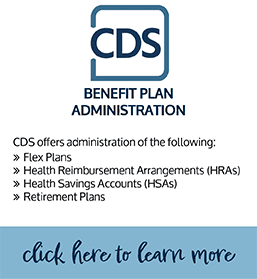IRS issues FAQs on CARES Act employee retention credit
IRS website – FAQs: Employee Retention Credit under the CARES Act
On its website, IRS has published frequently asked questions (FAQs) on the employee retention credit that is contained in the recently-enacted Coronavirus Aid, Relief, and Economic Security Act (the CARES Act; the Act). The FAQs include several examples showing the application of the credit rules.
Background. The CARES Act provides a refundable payroll tax credit for 50% of wages paid by Eligible Employers to certain employees during the COVID-19 crisis. (Act Sec. 2301(a)) The credit is available to employers, including non-profits, whose operations have been fully or partially suspended as a result of a government order limiting commerce, travel, or group meetings. The credit is also provided to employers who have experienced a greater than 50% reduction in quarterly receipts, measured on a year-over-year basis. (Act Sec. 2301(c)(2)) The maximum amount of qualified wages taken into account with respect to each employee for all calendar quarters is $10,000, so that the maximum credit for an Eligible Employer for qualified wages paid to any employee is $5,000. (Act Sec. 2301(c)(3)(C); Act Sec. 2301(b)(1))
IRS issues FAQs. IRS has now issued some FAQs on the credit.
Eligible Employers. Governmental employers are not Eligible Employers for the Employee Retention Credit. Also, self-employed individuals are not eligible for this credit for their self-employment services or earnings.
When is the operation of a trade or business partially suspended for the purposes of the credit? The operation of a trade or business may be partially suspended if an appropriate governmental authority imposes restrictions upon the business operations by limiting commerce, travel, or group meetings (for commercial, social, religious, or other purposes) due to COVID-19 such that the operation can still continue to operate but not at its normal capacity.
Example: A state governor issues an executive order closing all restaurants, bars, and similar establishments in the state in order to reduce the spread of COVID-19. However, the executive order allows those establishments to continue food or beverage sales to the public on a carry-out, drive-through, or delivery basis. This results in a partial suspension of the operations of the trade or business due to an order of an appropriate governmental authority with respect to any restaurants, bars, and similar establishments in the state that provided full sit-down service, a dining room, or other on-site eating facilities for customers prior to the executive order.
The 50% reduction in quarterly receipts rule. Under the 50% reduction in quarterly receipts rule, the period during which the credit is available ends with the first calendar quarter that follows the first calendar quarter for which the employer’s 2020 gross receipts for the quarter are greater than 80% of its gross receipts for the same calendar quarter during 2019. (Act Sec. 2301(c)(2)(B))
Example: An employer’s gross receipts were $100,000, $190,000, and $230,000 in the first, second, and third calendar quarters of 2020, respectively. Its gross receipts were $210,000, $230,000, and $250,000 in the first, second, and third calendar quarters of 2019, respectively. Thus, the employer’s 2020 first, second, and third quarter gross receipts were approximately 48%, 83%, and 92% of its 2019 first, second, and third quarter gross receipts, respectively. Accordingly, the employer had a significant decline in gross receipts commencing on the first day of the first calendar quarter of 2020 (the calendar quarter in which gross receipts were less than 50% of the same quarter in 2019) and ending on the first day of the third calendar quarter of 2020 (the quarter following the quarter for which the gross receipts were more than 80% of the same quarter in 2019). Thus, the employer is entitled to a retention credit with respect to the first and second calendar quarters.
Is an employer required to pay qualified wages to its employees under the CARES Act? No. The CARES Act does not require employers to pay qualified wages.
Can Eligible Employers claim the credit for qualified wages paid in March 2020? Eligible Employers may claim the Employee Retention Credit for qualified wages that they pay after March 12, 2020, and before January 1, 2021. Therefore, an Eligible Employer may be able to claim the credit for qualified wages paid as early as March 13, 2020.
Against what employment taxes does the credit apply? The credit is allowed against the employer portion of social security taxes under Code Sec. 3111(a), and the portion of taxes imposed on railroad employers under section 3221(a) of the Railroad Retirement Tax Act (RRTA) that corresponds to the social security taxes under Code Sec. 3111(a).
Refundability of the credit. The Eligible Employer may get a refund if the amount of the credit is more than certain federal employment taxes the Eligible Employer owes. That is, if for any calendar quarter the amount of the credit the Eligible Employer is entitled to exceeds the employer portion of the social security tax on all wages (or on all compensation for employers subject to RRTA) paid to all employees, then the excess is treated as an overpayment and refunded to the employer under Code Sec. 6402(a) and Code Sec. 6413(a). Consistent with its treatment as an overpayment, the excess will be applied to offset any remaining tax liability on the employment tax return, and the amount of any remaining excess will be reflected as an overpayment on the return. Like other overpayments of federal taxes, the overpayment will be subject to offset under Code Sec. 6402(a) prior to being refunded to the employer.
Can an Eligible Employer paying qualified wages fund its payments of qualified wages before receiving the credits by reducing its federal employment tax deposits? Yes. An Eligible Employer may fund the qualified wages by accessing federal employment taxes, including those that the Eligible Employer already withheld, that are set aside for deposit with the IRS, for other wage payments made during the same quarter as the qualified wages.
That is, an Eligible Employer that pays qualified wages to its employees in a calendar quarter before it is required to deposit federal employment taxes with the IRS for that quarter may reduce the amount of federal employment taxes it deposits for that quarter by half of the amount of the qualified wages paid in that calendar quarter. The Eligible Employer must account for the reduction in deposits on the Form 941, Employer’s Quarterly Federal Tax Return, for the quarter.
Example: An Eligible Employer paid $10,000 in qualified wages (including qualified health plan expenses) and is therefore entitled to a $5,000 credit, and is otherwise required to deposit $8,000 in federal employment taxes, including taxes withheld from all of its employees, for wage payments made during the same quarter as the $10,000 in qualified wages. The Eligible Employer has no paid sick or family leave credits under the Families First Coronavirus Response Act (FFCRA). The Eligible Employer may keep up to $5,000 of the $8,000 of taxes the Eligible Employer was going to deposit, and it will not owe a penalty for keeping the $5,000. The Eligible Employer is required to deposit only the remaining $3,000 on its required deposit date. The Eligible Employer will later account for the $5,000 it retained when it files Form 941, Employer’s Quarterly Federal Tax Return, for the quarter.
May an Eligible Employer reduce its federal employment tax deposit by the qualified wages that it paid, without incurring a failure-to-deposit penalty?
Yes. An Eligible Employer will not be subject to a penalty under Code Sec. 6656 for failing to deposit federal employment taxes relating to qualified wages in a calendar quarter if:
- the Eligible Employer paid qualified wages to its employees in the calendar quarter before the required deposit,
- the amount of federal employment taxes that the Eligible Employer does not timely deposit, reduced by any amount of federal employment taxes not deposited in anticipation of the paid sick or family leave credits claimed under the FFCRA, is less than or equal to the amount of the Eligible Employer’s anticipated Employee Retention Credit for the qualified wages for the calendar quarter as of the time of the required deposit, and
- the Eligible Employer did not seek payment of an advance credit by filing Form 7200, Advance Payment of Employer Credits Due to COVID-19, with respect to any portion of the anticipated credits it relied upon to reduce its deposits.
For more information, see Relief from failure to make employment tax deposits due to coronavirus credits.
How can an Eligible Employer that is paying qualified wages fund the payment of these wages if the Eligible Employer does not have sufficient federal employment taxes set aside for deposit to cover those payments? Can the employer get an advance of the credits? Because quarterly returns are not filed until after qualified wages are paid, some Eligible Employers may not have sufficient federal employment taxes set aside for deposit to the IRS to fund their qualified wages. Accordingly, the IRS has established a procedure for obtaining an advance of the refundable credits.
The Eligible Employer should first reduce its remaining federal employment tax deposits for wages paid in the same calendar quarter by the maximum allowable amount. If the anticipated credit for the qualified wages exceeds the remaining federal employment tax deposits for that quarter, the Eligible Employer can file a Form 7200, Advance Payment of Employer Credits Due to COVID-19, to claim an advance refund for the full amount of the anticipated credit for which it did not have sufficient federal employment tax deposits.
If an Eligible Employer fully reduces its required deposits of federal employment taxes otherwise due on wages paid in the same calendar quarter to its employees in anticipation of receiving the credits, and it has not paid qualified wages in excess of this amount, it should not file the Form 7200. If it files the Form 7200, it will need to reconcile this advance credit and its deposits with the qualified wages on Form 941 (or other applicable federal employment tax return such as Form 944 or Form CT-1), and it may have an underpayment of federal employment taxes for the quarter.
Example: An Eligible Employer paid $20,000 in qualified wages, and is therefore entitled to a credit of $10,000, and is otherwise required to deposit $8,000 in federal employment taxes, including taxes withheld from all of its employees, on wage payments made during the same calendar quarter. The Eligible Employer has no paid sick or family leave credits under the FFCRA. The Eligible Employer can keep the entire $8,000 of taxes that the Eligible Employer was otherwise required to deposit without penalties as a portion of the credits it is otherwise entitled to claim on the Form 941. The Eligible Employer may file a request for an advance credit for the remaining $2,000 by completing Form 7200.
May an Eligible Employer receive both the tax credits for the qualified leave wages under the FFCRA and the Employee Retention Credit under the CARES Act? Yes, but not for the same wages. The amount of qualified wages for which an Eligible Employer may claim the Employee Retention Credit does not include the amount of qualified sick and family leave wages for which the employer received tax credits under the FFCRA.
May an Eligible Employer receive both the Employee Retention Credit and a Small Business Interruption Loan under the Paycheck Protection Program that is authorized under the CARES Act? No. An Eligible Employer may not receive the Employee Retention Credit if the Eligible Employer receives a Small Business Interruption Loan under the Paycheck Protection Program that is authorized under the CARES Act (“Paycheck Protection Loan”). An Eligible Employer that receives a Paycheck Protection Loan should not claim Employee Retention Credits.





